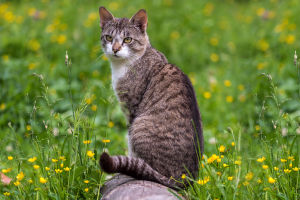When exploring what cats fear the most, it's essential to consider their innate sensitivity and alertness. For most cats, sudden loud noises are one of the primary sources of fear.
High decibel sounds, such as thunder, firecrackers, or the sudden start of household appliances, can cause cats to panic and flee.
Additionally, unfamiliar environments are a significant source of fear for cats. When placed in an unknown space, they may exhibit signs of anxiety and choose to hide to feel secure.
Smells and Visual Stimuli: Olfactory and Visual Fears in Cats
Cats have an exceptionally keen sense of smell, and certain strong or unfamiliar odors, such as perfumes, cleaning agents, or the scent of certain plants, can cause discomfort and fear.
These smells can trigger a cat's instinct to avoid potential "danger." Similarly, a cat's visual system is highly sensitive to certain stimuli. Rapidly moving objects, sudden images, or items with strange shapes and bright colors can make cats feel uneasy and may even provoke aggressive behavior.
Social Fears: Territorial Awareness and Loneliness in Cats
Cats are highly territorial animals, with a strong sense of ownership over their domain. When other cats or animals intrude on their territory, they may exhibit intense aggression to defend their space.
Additionally, cats have significant social needs, and prolonged loneliness or neglect can lead to psychological fears and anxiety. A lack of sufficient companionship and interaction can result in depression, anxiety, and behavioral issues in cats.
Health and Age Factors: Sources of Feline Fear
A cat's health and age are also crucial factors influencing their sense of fear. Young or elderly cats, with weaker physical functions, may be more easily startled by external stimuli. Certain health conditions, such as hearing loss or vision impairment, can also reduce a cat's ability to perceive their environment, thereby increasing their fear.
There is no one-size-fits-all answer to what cats fear the most. It depends on individual differences, living environments, and health conditions. As cat owners, we need to carefully observe changes in our cats' behavior and emotions and identify and alleviate their fears in a timely manner. By providing a safe and comfortable living environment, along with ample love and companionship, we can help our feline friends develop a more positive and healthy mindset.


